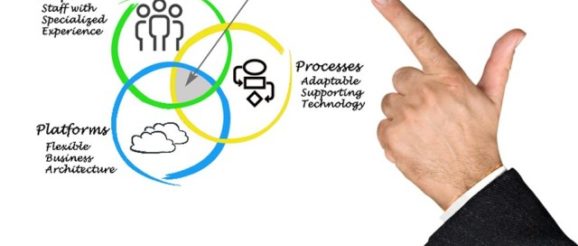Op-Ed: How do you create a culture of innovation?

Creating a culture of innovation is one of the most important things a company can do to ensure that it continues to evolve and prosper.
But the right environment must exist for bright minds to continue presenting intelligent ideas that solve customer problems. These are the three key ingredients to help create a culture of innovation.
Diversity of thought
The basis of everything is to have diversity of opinions. The idea is to create an environment where creativity is encouraged, so that people are willing to share their ideas, even if they may be contrary to the current mentality.
This allows the team to take a problem and converge many thought processes to try to find the best solution.
But to have diversity of thought, people must know that their thinking is not only accepted, but embraced. They need a safe space.
Inclusion is the heart of a safe space, and leaders have to invest in this so that people know how to say no confidently. Leaders establish behaviors, tones and attitudes to help create safe spaces in the workplace and in their teams.
For example, if I’m not in a meeting, I always say the “door always open” when someone asks if they should close it behind them. I’m purposely planting the seed that I’m not only open mentally in a conversation, but also from a physical aspect with my door also being open.
There are other ways that I can also create a safe space. I’m talking about reverse tutoring. When that person sits next to me, I sit on the edge to start the conversation. As the discussion continues, I can sit more comfortably, but my main goal at the beginning is that my reverse mentor be comfortable. It’s not just about words, but about body language.
A safe space is also about how you react. Nobody wants to give bad news, and that is due in large part to the reactions it provokes. When my team tells me that we’re not performing as expected, I recognize it, I thank them for the transparency, and I tell them that I trust that we can overcome it together. When you have a safe space, it promotes diversity of thinking as the rule versus the exception.
The cost of failure
I think leaders have to reduce the cost of failure. If all innovation comes through learning, and all learning leads to failures, then we must give our teams permission to fail. Failure helps educate us and helps us repeat to get the best idea (because it rarely starts with the best idea).
If you consider failure as an operational rhythm, it allows you to foster a culture of learning and not fear. It means you can recognize that something will not work, and you can move on. It gives you permission to press the eject button.
Reducing the cost of failure also helps organizations separate innovation from a safe outcome. Commercial value comes from many things: innovation, market conditions, opportunity. Innovation can work, but other ingredients, including time, can prevent it from succeeding. It’s not just about being lucky, it’s a confluence that all conditions are ready at the same time. Leaders should not be afraid of failing publicly: it is the best character generator.
Time
People need to have time and space for innovation. Let’s say your organization has a technological debt that causes a lot of unplanned work, so people react and simply survive. It is difficult for innovation to occur in these conditions. By creating bandwidth for innovation, people can focus on a result beyond the tasks. Those who can do this thrive.

My team has a permanent “focus on Wednesday” rule: there are no team meetings on Wednesday. This is respected from top to bottom, so all team members feel free to remind people that a meeting should not be scheduled on a Wednesday. We encourage team members to use the approach on Wednesday to work on projects, spend uninterrupted time solving challenges and, of course, innovating.
In 1948, 3M launched a program where 15% of employee time was devoted to experimental projects and innovation. One of the results of that program was the invention of the Post-it note.
Just think about what your teams could do if they can dedicate time to innovation.
